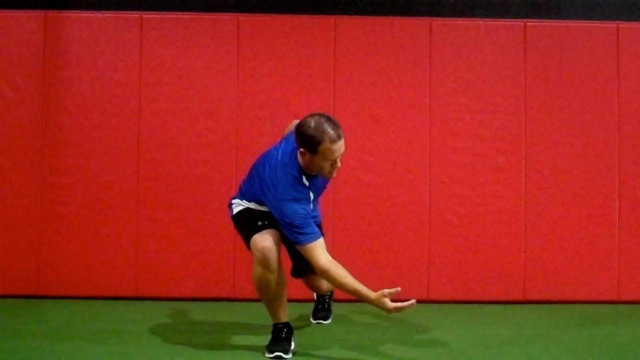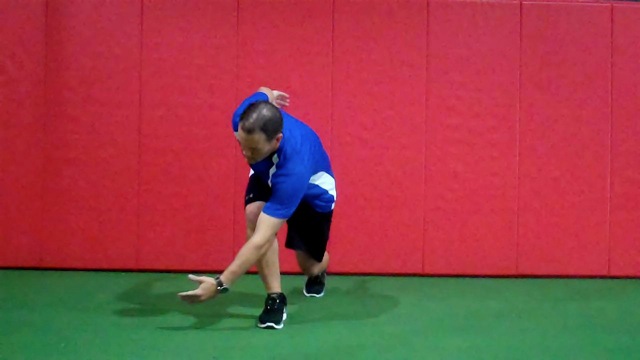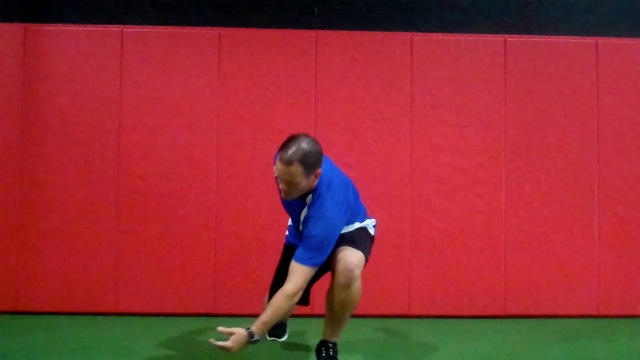
I work with lots of athletes involved in cutting and pivoting sports such as soccer, basketball, tennis and lacrosse. Hamstring strains and knee injuries are common in my clinic. Assessing proximal rotational strength and stability is important as it plays a big role in deceleration and knee injury prevention.
This exercise will address eccentric control of coupled hip flexion and rotation, a motion that occurs frequently in sport.
Execution:
Begin in a tall standing position. Next lunge forward over the left leg reaching down with the right arm and rotate the torso to the left while the hand moves below and outside the left shin. Move through full available range of motion and return to the start position. Now, lunge forward over the right leg reaching down with the left arm and rotating the torso while reaching the hand below and outside the right shin.
Repeat this alternate leg sequence for 10 repetitions on each side. During the next set, perform alternate leg lunges while reaching the same arm below and inside the same knee (e.g. left hand passes below and inside the left knee, while right hand passes below and inside the right knee). Perform 10 repetitions on each side.
 |  |
 |  |
Application:
Understanding closed chain biomechanics and hip function as it pertains to sport is essential for training and rehabbing athletes. If you work with a client who has a proximal HS strain or weakness, it is important to note whether the injury and/or deficiency is more medial or lateral.
Muscle testing and selective stretching will often identify the area of weakness. However, closed chain assessment with rotation is a key assessment tool that helps guide exercise selection. Simply working the muscles in the sagittal plane alone will not be enough. Adding rotation in hip flexion will help restore transverse plane function and determine if the tissue is up to the task of fully decelerating the body.
I frequently use this particular exercise for proximal closed chain HS strengthening and gluteal activation. The reaching component helps facilitate more posterior chain work based on the center of gravity.
In addition, ACL injury prevention programs must include HS strengthening in a fashion that encourages hip flexion with the center of mass moving further forward (esp. in females) as well as reducing hip adduction/internal rotation. The contralateral reach (right hand/left leg and vice-versa) involves closed chain hip internal rotation and requires sufficient HS activation as well as hip external rotator muscle firing to maintain neutral knee alignment and prevent a valgus moment.
Precautions:
Keep in mind that limitations in ankle dorsiflexion and thoracic spine rotation may impact form, so monitor closely and adjust the range of motion as needed to avoid dysfunctional patterns or compensatory motion.
Brian Schiff, PT, OCS, CSCS, is a licensed physical therapist, respected author and fitness professional. Currently, he serves as the supervisor at the Athletic Performance Center in Raleigh, NC. Brian presents nationally at several professional conferences and seminars on injury prevention, rehab and sport-specific training. For more cutting edge training information, subscribe to his monthly Training & Sports Medicine Update at www.BrianSchiff.com.














